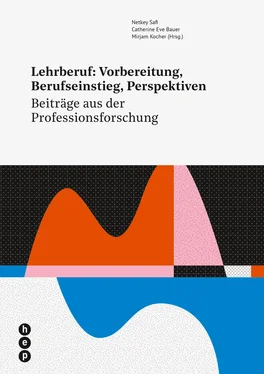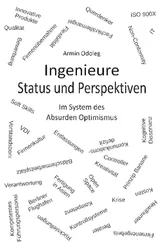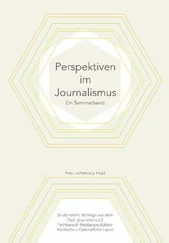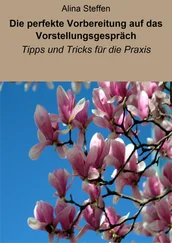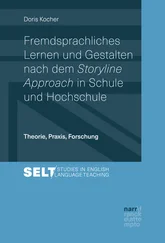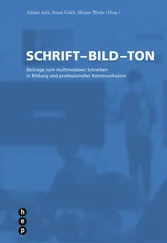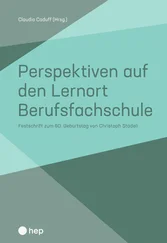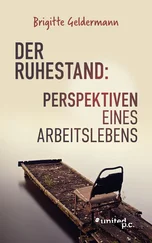Meyer, B. E., & Kiel, E. (2014). Wie Lehramtsstudierende ihr Praktikum erleben – Selbstbildbeschädigung, Selbstbildbestärkung und Entwicklung. Zeitschrift für Bildungsforschung 4 (1), 23–41.
Olcar, D. (2015). Teacher’s life goals and well-being: mediating role of basic psychological needs and flow . https://bit.ly/2U9Ly91[3.3.2019].
Ostendorf, A., & Welte, H. (2012). Portfolioarbeit im Schulpraktikum als methodischer Weg zur Unterstützung eines Cross-border-learnings – dargestellt am Beispiel des Schulpraktikums im Masterstudium Wirtschaftspädagogik an der Universität Innsbruck. Die berufsbildende Schule, (Mai), 152–158.
Palak, Z., & Papuda-Dolinska, B. (2015). Self-actualisation as an essential dimension of professional competence of special teacher. Annales Universitatis Mariae Curie – Sklodowska, 17 (2), 9–27.
Ramm, M., Kolbert-Ramm, C., Bargel, T., & Lind, G. (1998). Praxisbezug im Lehramtsstudium Erfahrungen und Beurteilungen der Lehramtsstudierenden . Konstanz: Universität Konstanz.
Rißmann, J., Feine, U., & Schramm, U. (2013). Vom Schüler zum Lehrer – Biografische Selbstreflexion in der Lehramtsausbildung. In B. Jürgens & B. Krause (Hrsg.), Professionalisierung durch Trainings (S. 125–137). Aachen: Shaker.
Rothland, M. (2011). Warum entscheiden sich Studierende für den Lehrerberuf? In E. Terhart, H. Bennewitz & M. Rothland (Hrsg.), Handbuch der Forschung zum Lehrerberuf (S. 268–296). Münster: Waxmann.
Rovai, A. P., Whighting, M. J., Baker, J. D., & Grooms, L. D. (2009). Development of an instrument to measure perceived cognitive, affective, and psychomotor learning in traditional and virtual classroom higher education settings. The Internet and Higher Education, 12 (1), 7–13.
Schmitz, G. S., & Schwarzer, R. (2000). Selbstwirksamkeitserwartungen von Lehrern: Längsschnittbefunde mit einem neuen Instrument. Zeitschrift für Pädagogische Psychologie, 14 (1), 12–25.
Schubarth, W., Speck, K., Große, U., Seidel, A., & Gemsa, C. (2006). Die zweite Phase der Lehrerbildung aus Sicht der Brandenburger Lehramtskandidatinnen und Lehramtskandidaten. Die Potsdamer LAK-Studie 2004/5. In W. Schubarth & P. Pohlenz (Hrsg.), Qualitätsentwicklung und Evaluation in der Lehrerbildung. Die zweite Phase: Das Referendariat (S. 13–177). Potsdam: Potsdamer Beiträge zur Lehrevaluation.
Schumacher, K., & Lind, G. (2000). Praxisbezug im Lehramtsstudium – Bericht einer Befragung von Konstanzer LehrerInnen und Lehramtsstudierenden. Konstanz: Universität Konstanz.
Topala, I., & Tomozzi, S. (2014). Learning satisfaction: validity and reliability testing for students’ learning satisfaction questionnaire (SLSQ). Procedia – Social and Behavioral Sciences, 128 , 380–386.
Van den Broeck, A., Vansteenkiste, M., De Witte, H., Soenens, B., & Lens, W. (2010). Capturing autonomy, competence, and relatedness at work: Construction and initial validation of the Work-related Basic Need Satisfaction scale. Journal of Occupational and Organizational Psychology, 83 (4), 981–1002.
Vasile, C., Margaritoiu, A., & Eftimie, S. (2011). Security needs among teachers. Procedia – Social and Behavioral Sciences, 29 , 1251–1256.
Vermeulen, M., Castelijns, Q., Kools, Q., & Koster, B. (2012). Measuring student teachers’ basic psychological needs. Journal of Education for Teaching, 38 (4), 453–467.
Конец ознакомительного фрагмента.
Текст предоставлен ООО «ЛитРес».
Прочитайте эту книгу целиком, купив полную легальную версию на ЛитРес.
Безопасно оплатить книгу можно банковской картой Visa, MasterCard, Maestro, со счета мобильного телефона, с платежного терминала, в салоне МТС или Связной, через PayPal, WebMoney, Яндекс.Деньги, QIWI Кошелек, бонусными картами или другим удобным Вам способом.
